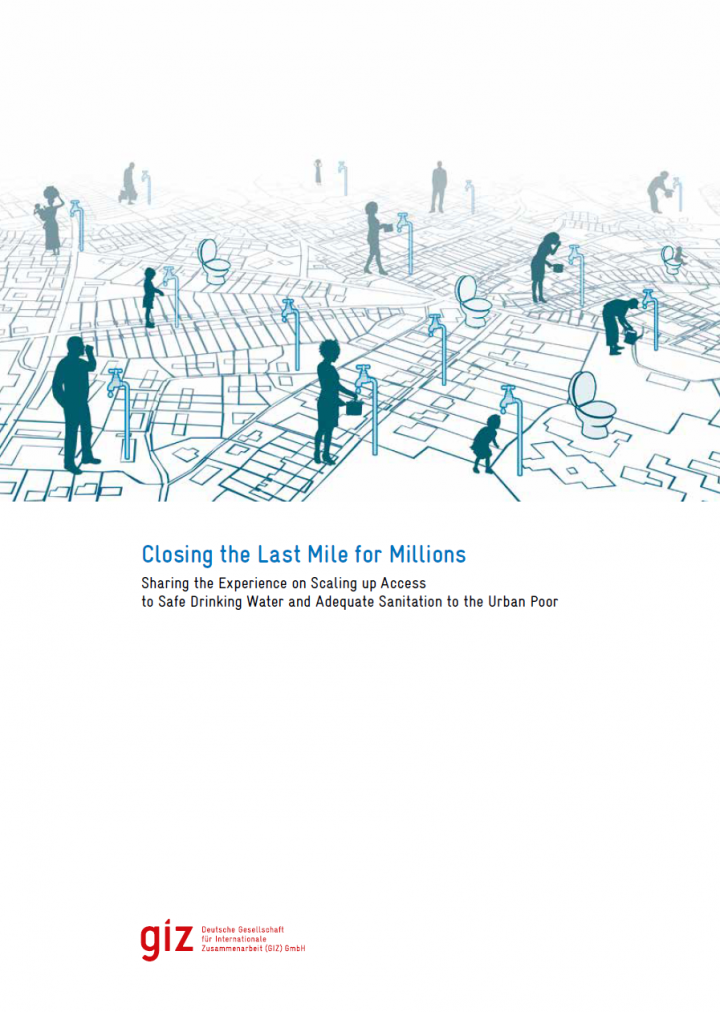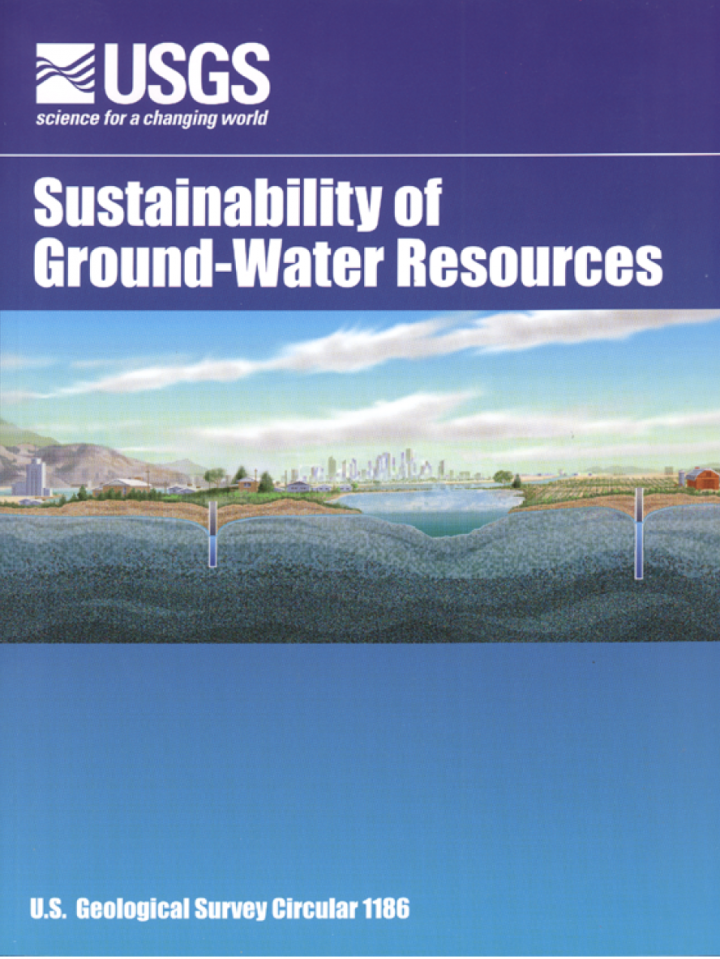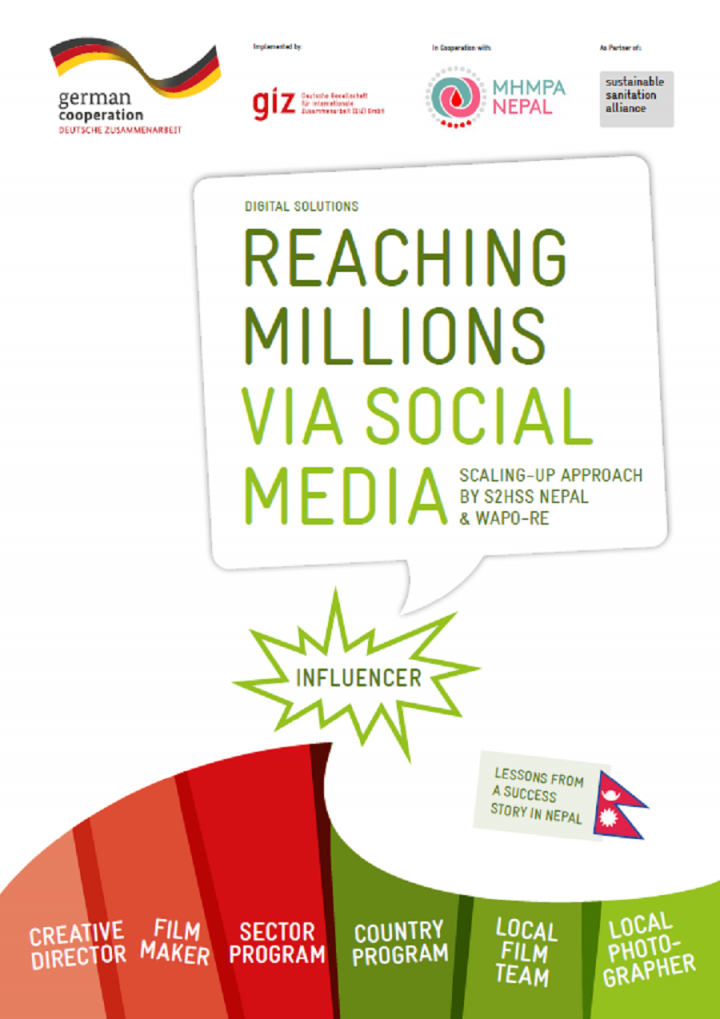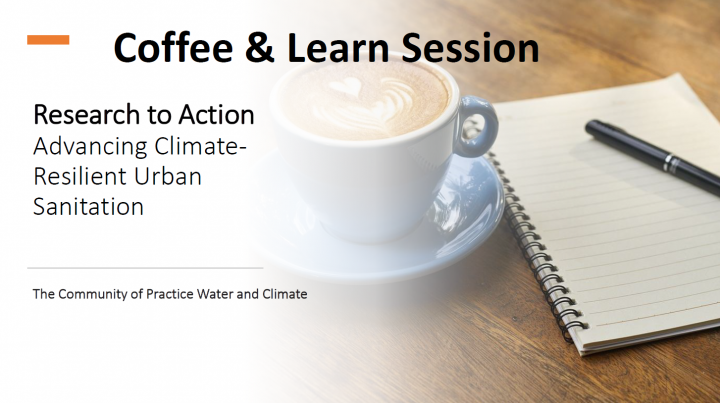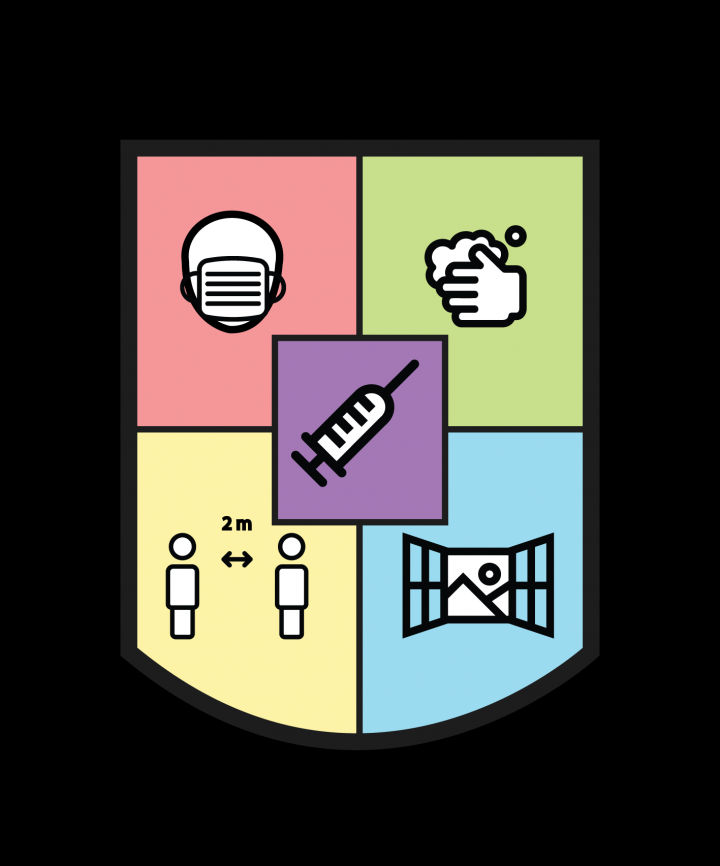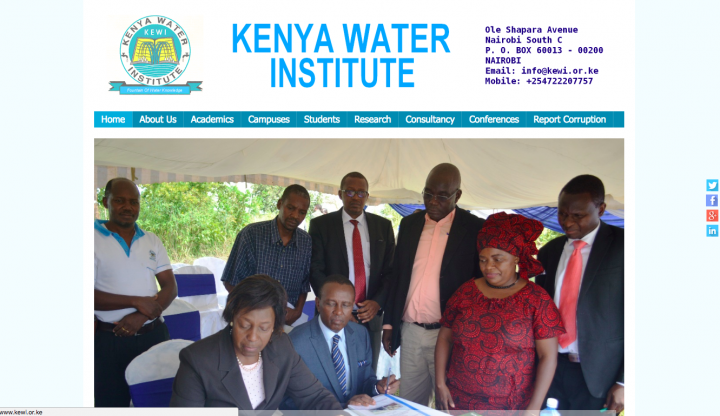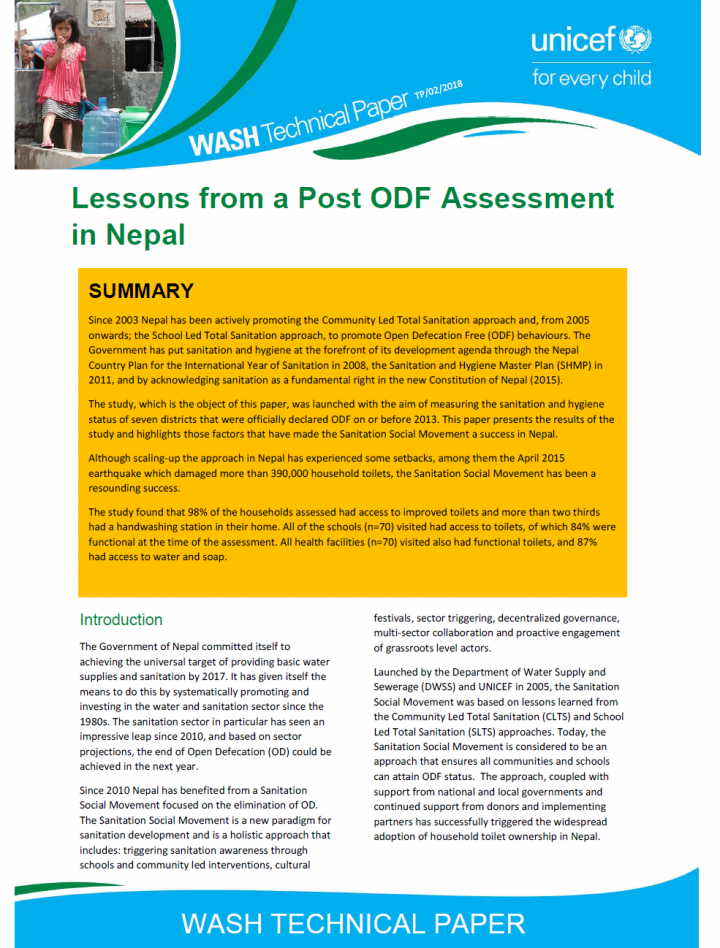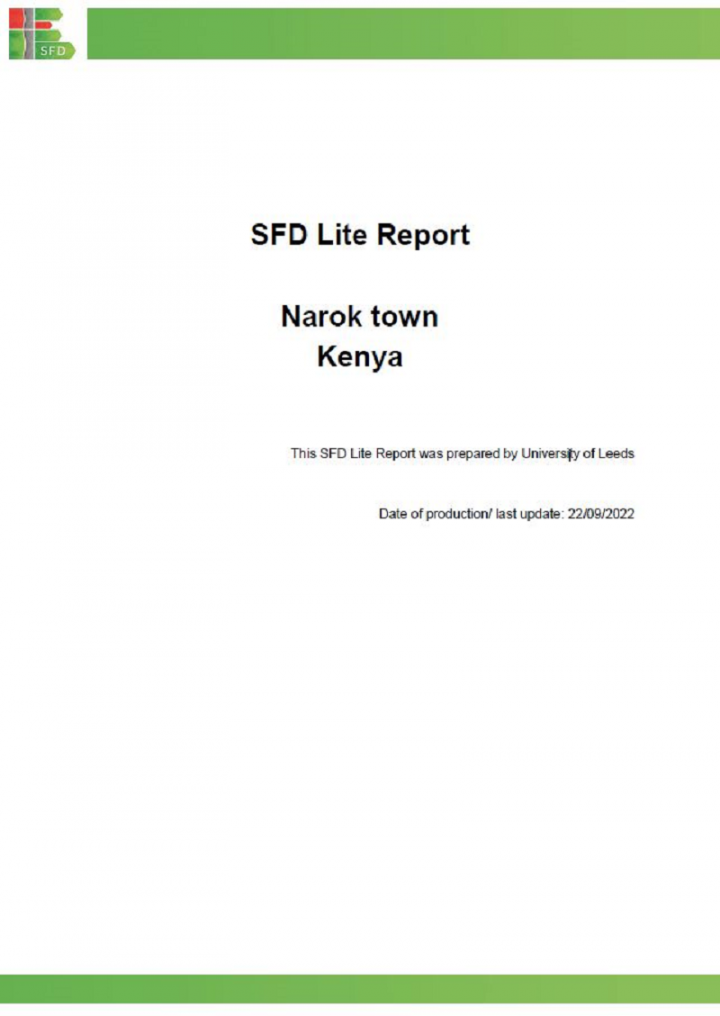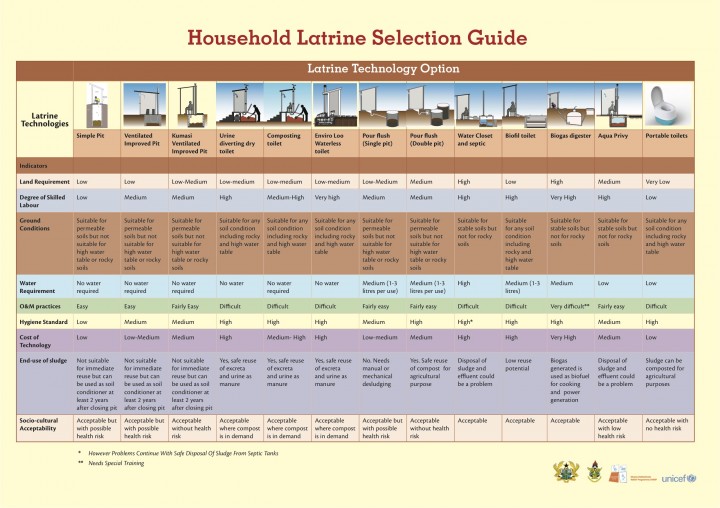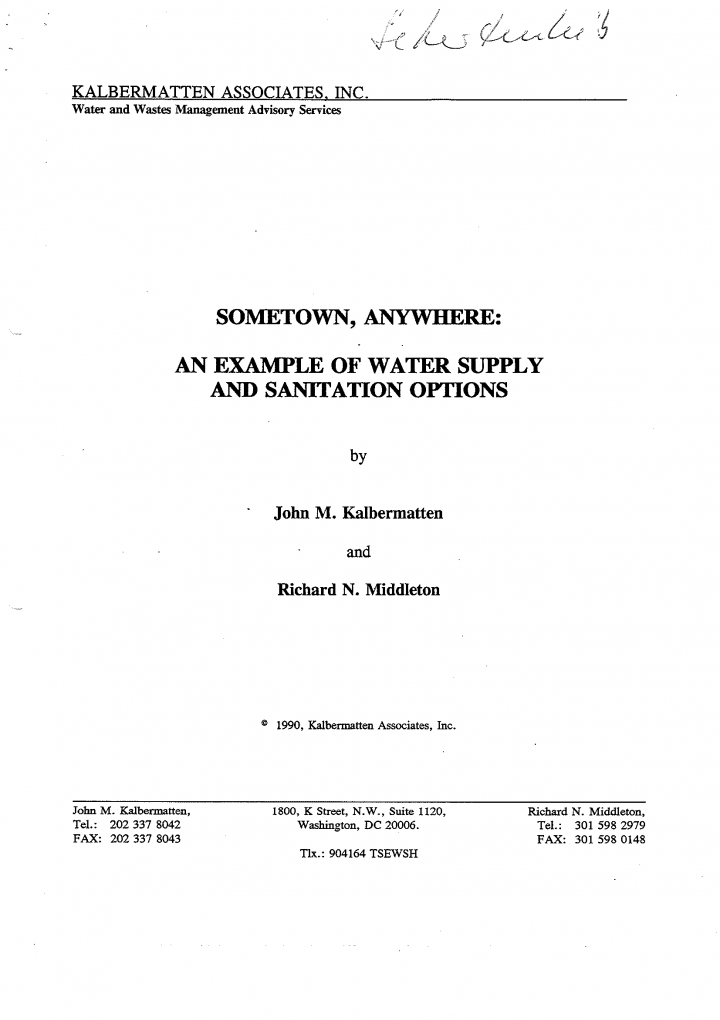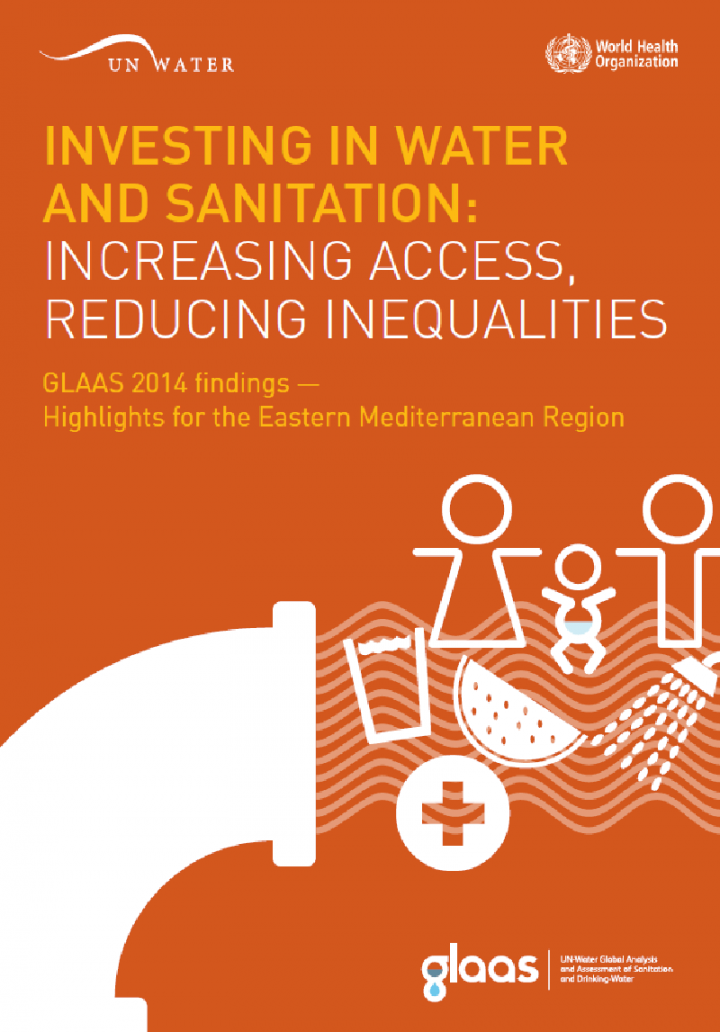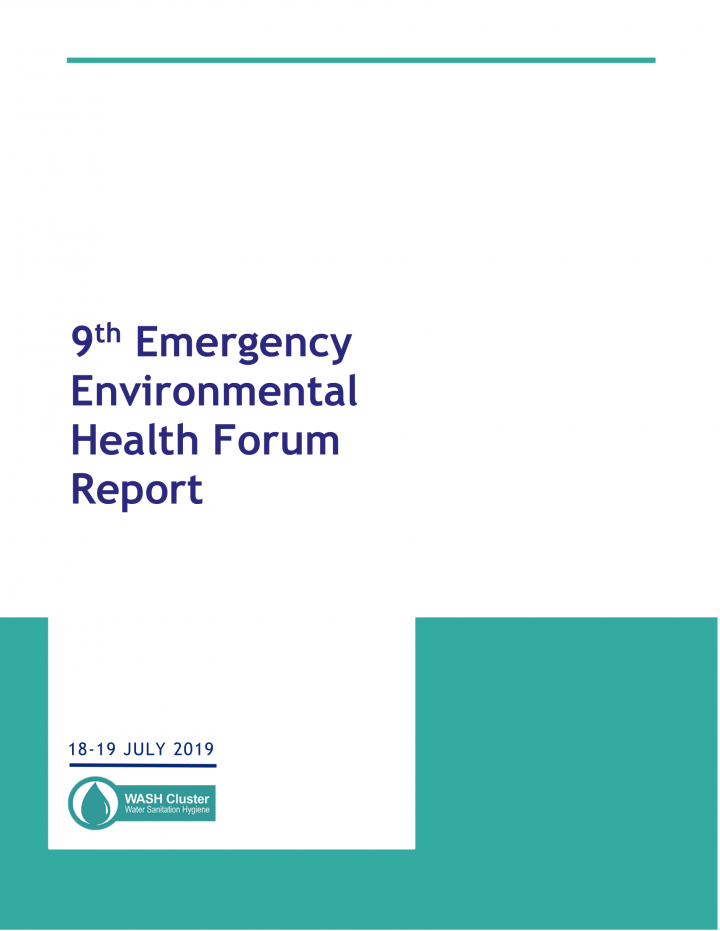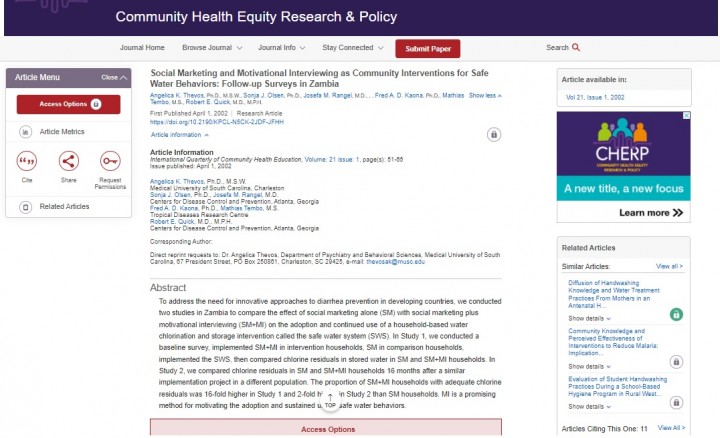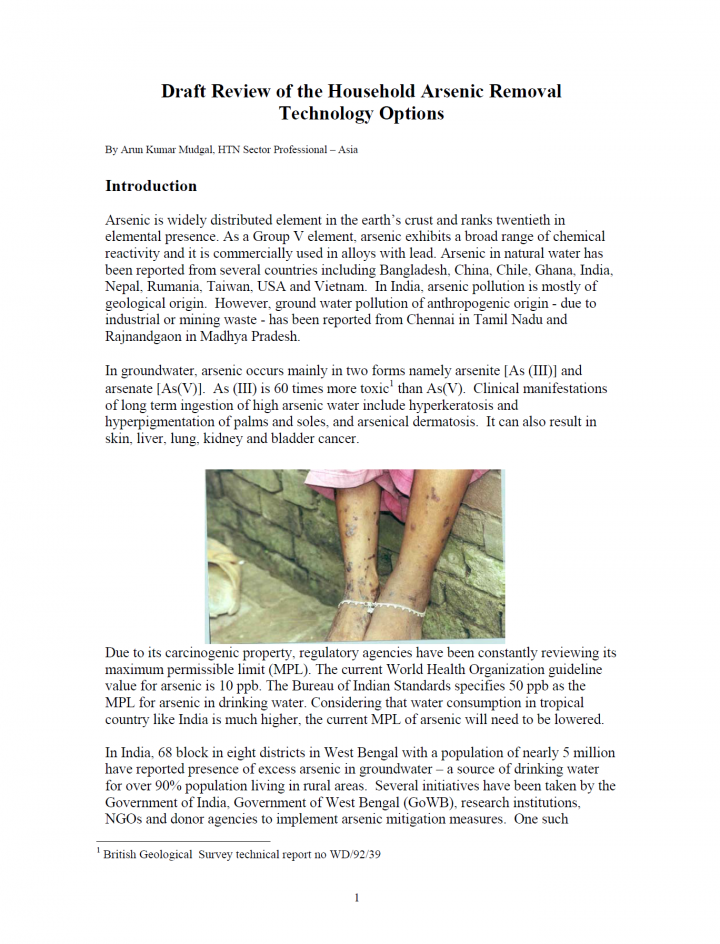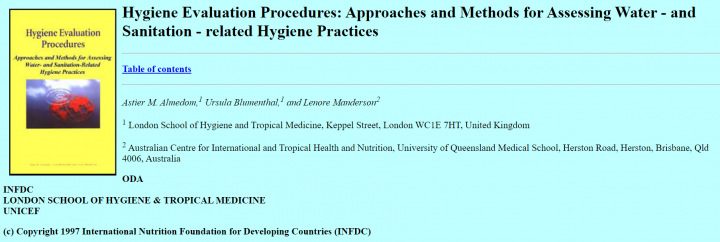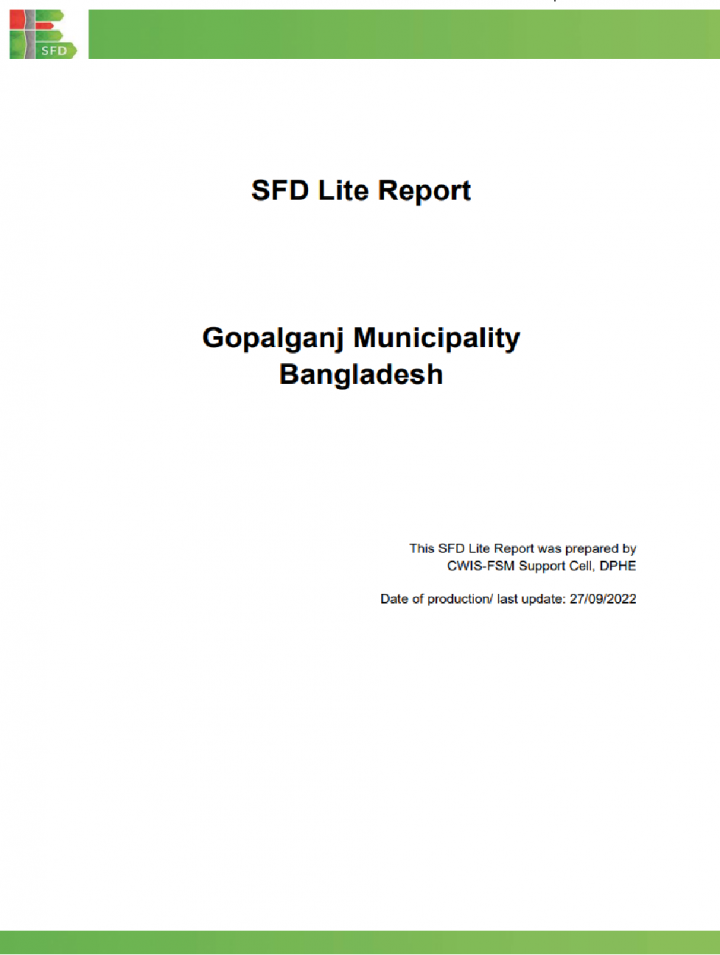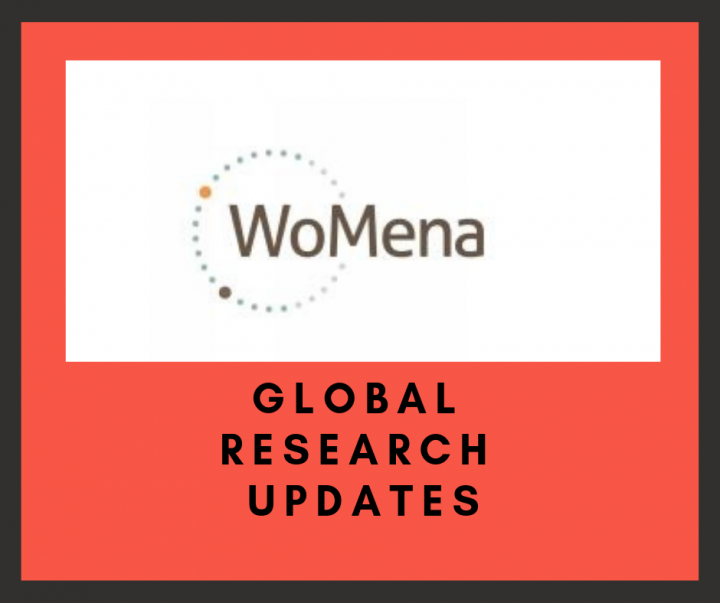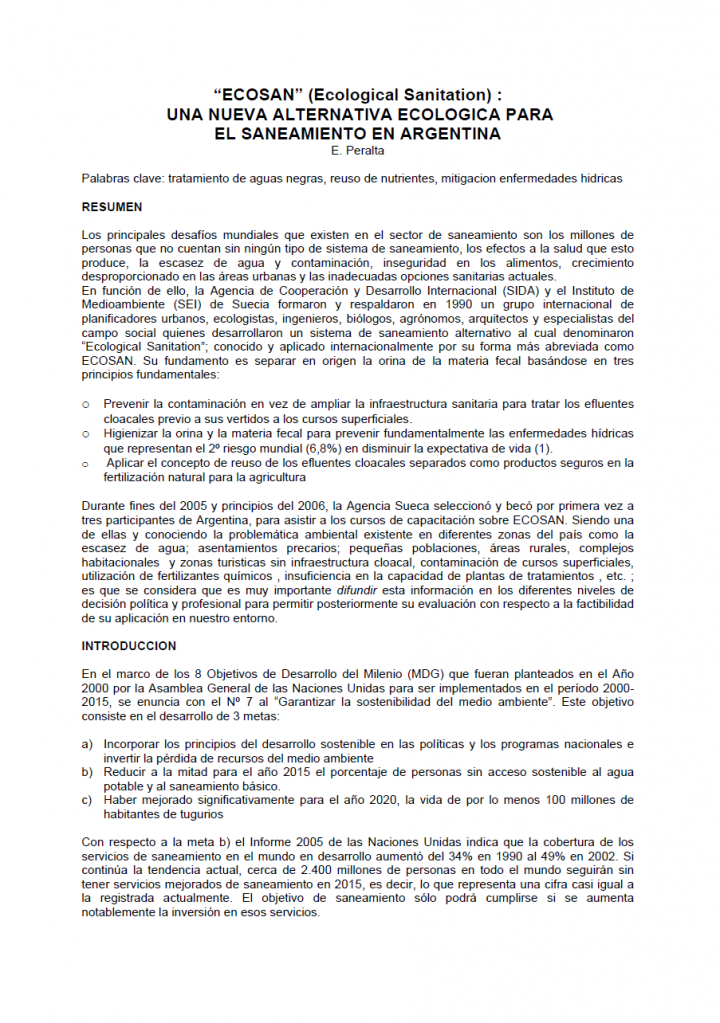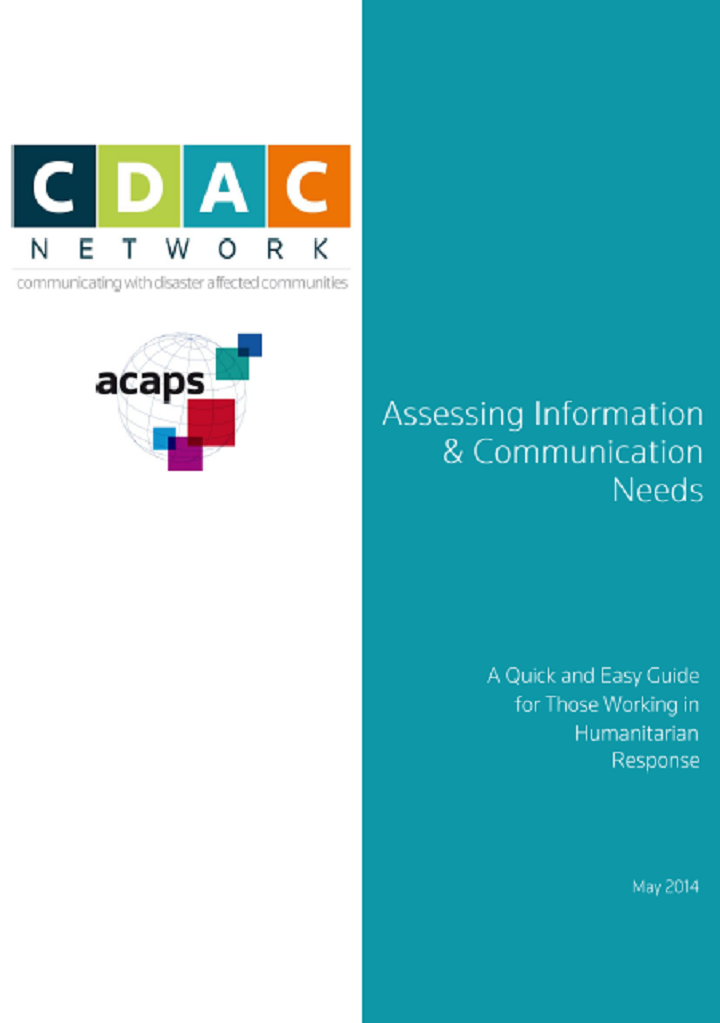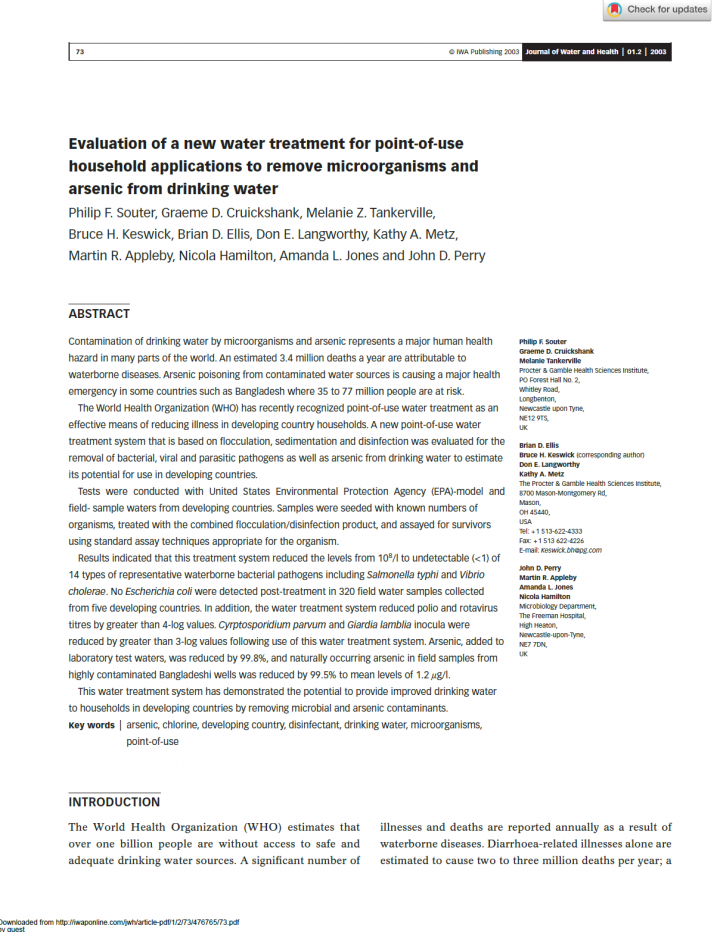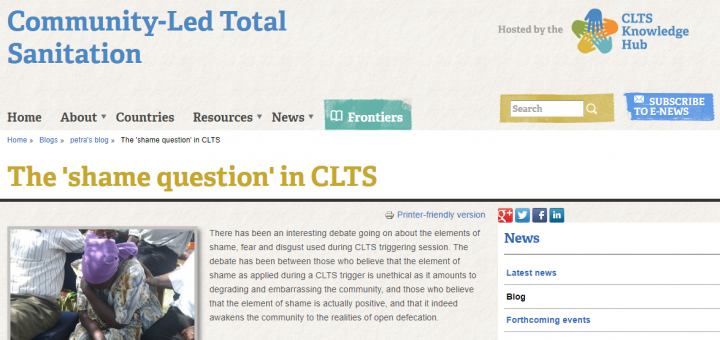Searching for information on Sanitation Workers?
The Sanitation Workers Knowledge + Learning Hub is the best source for all current news, trends, articles and updates on sanitation workers rights around the world.
Despite concerted efforts to extend water and sanitation services to the fast-growing numbers of people living in urban low-income and often informal areas, the water sector in many parts of Sub-Saharan Africa appears to be stagnating. Many challenges stand in the way of closing the last mile of physical access for an estimated 250 million unserved urban residents. A misguided focus on …
Ground water is one of the Nation’s most important natural resources. It provides about 40 percent of the Nation’s public water supply. In addition, more than 40 million people, including most of the rural population, supply their own drinking water from domestic wells. As a result, ground water is an important source of drinking water in every State. Ground water is also the source of much …
There is no doubt that social media can be an instigator of social change. Successful social media campaigns can greatly contribute to increasing the visibility of initiatives and can boost scaling-up efforts. However, to make the campaign successful, it’s essential to get the ingridiences right.
Inspiring for you could be our experience with the highly successful social media campaign …
The SuSanA Secretariat and University of Technology, Sydney (UTS) were invited by the GIZ Community of Practice "Water and Climate" to a webinar, which took place on the 25th July 2023.
This transformative Coffee & Learn session bridges the gap between research and project implementation. As climate change poses an increasing threat to urban sanitation services, it is crucial to stay ahead of …
COVID-19 pandemic swept across India in April and May 2021, and preventing infection became of paramount importance. The health systems were overwhelmed. Over the past year, we have learnt great deal of how the disease spread. This necessitated expansion of the earlier preventive measures promoted in the early stages of the pandemic in 2020 such as wearing masks, social distancing and washing …
The function of the department is mainly to carry surveillance on sector dynamics, conduct training needs, develop and implement short tailor made courses for skills upgrading, problem solving, and refresher in the water and related sectors. The tailor made courses are to suit the training needs and interventions desired for organizational growth in accordance with strategic plans and business …
Since 2003 Nepal has been actively promoting the Community Led Total Sanitation approach and, from 2005 onwards; the School Led Total Sanitation approach, to promote Open Defecation Free (ODF) behaviours. The Government has put sanitation and hygiene at the forefront of its development agenda through the Nepal Country Plan for the International Year of Sanitation in 2008, the Sanitation and …
Narok town is Narok county’s capital city which is the largest city on the way to Maasai Mara National Reserve from Nairobi. It became a municipality in October 2019 due to the rapidly growing population. Figure 2 shows the official municipality boundary and demographical data from the latest census in 2019. The municipality covers the area of Narok Township (Narok Town & Oleleshwa), Nkareta …
Sometown is a regional center in a predominantly agricultural area. It serves as a commercial center for this area, and has a well-established light industry as well as several food and cotton processing enterprises.
Water for the municipal supply is abstracted from wellfields 5 km east of the city limits. Water quality is at present excellent; the water is chlorinated, but only as a …
The International Organization for Migration (IOM) is committed to the principle that humane and orderly migration benefits migrants and society. As the UN Migration Agency, IOM acts with its partners in the international community to assist in meeting the operational challenges of migration; advance understanding of migration issues; encourage social and economic development through migration; …
PURPOSE AND BACKGROUND
WHO recognizes that effective, integrated and coordinated communication is integral to carrying out WHO’s goal to build a better, healthier future for people all over the world. The purpose of this Framework is to describe a strategic approach for effectively communicating WHO information, advice and guidance across a broad range of health issues: from chronic health …
This report examines innovative financing mechanisms that can help attract new financial resources into water and sanitation services (WSS ). A particular focus is placed on mobilising market-based repayable financing (such as loans, bonds and equity) as a way of bridging the financial gap to meet the Millennium Development Goals and other crucial sector objectives. The Camdessus and Gurria …
In this regional analysis, the UN-Water Global Analysis and Assessment of Sanitation and Drinking-Water (GLAAS) 2013/2014 country survey data from 11 Eastern Mediterranean Member States and territories, i.e. countries, are presented along with information provided by 23 external support agencies (ESAs). The 11 countries representing a population of 430 million in the WHO Eastern Mediterranean …
The 9th Emergency Environmental Health Forum took place from 18th -19th 2019 in Geneva, Switzerland. It brought together water, sanitation and hygiene (WASH) experts. The forum provided an opportunity to exchange recent field experiences and explore innovative approaches amongst over 110 attendees and discuss ways for future action and interventions for WASH in emergencies.
EEHF 2019 …
To address the need for innovative approaches to diarrhea prevention in developing countries, we conducted two studies in Zambia to compare the effect of social marketing alone (SM) with social marketing plus motivational interviewing (SM+MI) on the adoption and continued use of a household-based water chlorination and storage intervention called the safe water system (SWS). In Study 1, we …
Arsenic is widely distributed element in the earth’s crust and ranks twentieth in elemental presence. As a Group V element, arsenic exhibits a broad range of chemical reactivity and it is commercially used in alloys with lead. Arsenic in natural water has been reported from several countries including Bangladesh, China, Chile, Ghana, India, Nepal, Rumania, Taiwan, USA and Vietnam. In India, …
The handbook provides practical guidelines for evaluation water- and sanitation-related hygiene practices. An evaluation of hygiene practices can be used for the purposes of project planning, monitoring, or final assessment of the project’s impact. The main focus is on the practical concerns of field personnel working in water supply, sanitation, and health/hygiene education projects who want …
Gopalganj is a fast-growing city located along the Dhaka-Khulna highway and 209 km South of Dhaka. It is beside the Kaliganga River and it is well connected with road, water, and railways. It is one of the oldest towns in the sub-continent and was declared a municipality in 1972. Gopalganj is one of the 53 district level municipality in the country.
According to the population census in 2011 …
Los principales desafíos mundiales que existen en el sector de saneamiento son los millones de personas que no cuentan sin ningún tipo de sistema de saneamiento, los efectos a la salud que esto produce, la escasez de agua y contaminación, inseguridad en los alimentos, crecimiento desproporcionado en las áreas urbanas y las inadecuadas opciones sanitarias actuales.
En función de ello, la …
Contamination of drinking water by microorganisms and arsenic represents a major human health hazard in many parts of the world. An estimated 3.4 million deaths a year are attributable to waterborne diseases. Arsenic poisoning from contaminated water sources is causing a major health emergency in some countries such as Bangladesh where 35 to 77 million people are at risk.
The World Health …
There has been an interesting debate going on about the elements of shame, fear and disgust used during CLTS triggering session. The debate has been between those who believe that the element of shame as applied during a CLTS trigger is unethical as it amounts to degrading and embarrassing the community, and those who believe that the element of shame is actually positive, and that it indeed …

